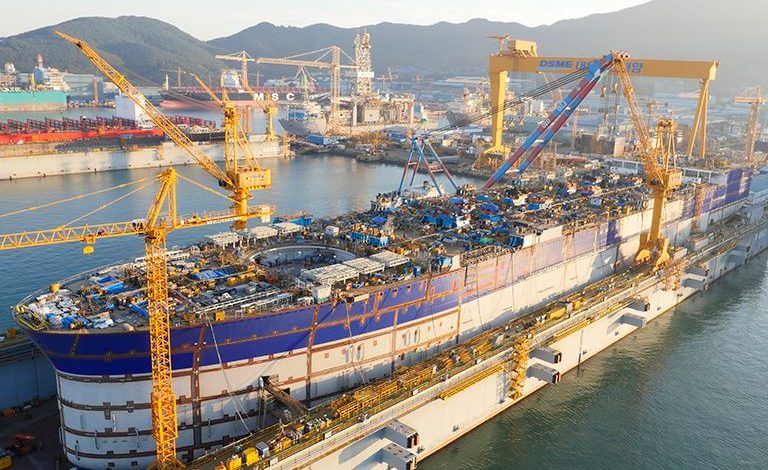
Seoul’s decision to come to the aid of its shipyards has been criticized by the Japanese government – the starting gun in what could be another protracted battle among shipbuilding nations over state subsidies, something that ran for a number of the years at the World Trade Organisation (WTO) in the previous decade.
It has emerged Tokyo issued a critical letter to the OECD on the Korean government’s decision to rescue Daewoo Shipbuilding & Marine Engineering (DSME), one of South Korea’s largest shipyards.
Seoul, via the Korea Development Bank and the Export-Import Bank of Korea, pumped KRW4.2trn into DSME last October as the yard struggled with offshore cancellations and an accounting fraud that threatened to cripple the shipbuilder. This was a market distortion, the Japanese government contends, an echo of earlier shipbuilding trade spats.
The European Union took Seoul to task at the WTO in 2002 over state subsidies in various industries including shipbuilding, in a case that rumbled on for much of the decade.
Now with all its leading yards entering restructuring (and tens of thousands of jobs on the line) speculation is growing that Seoul will intervene further and thus draw out another lengthy case at the WTO.
“Talks with creditors and the shipbuilders should be first. It’s too early to talk about any government role,” employment and labour minister Lee Ki-kweon said last month.
Nevertheless, with the harshest measures set to be announced in the coming days, with upwards of 10,000 jobs on the line, Seoul is coming under some pressure on home soil to intervene, something it knows could cause it repercussions at the Geneva headquarters of the WTO down the line.
Last month the International Maritime Fund (IMF) also weighed into and criticised Seoul’s efforts to save its leading shipping lines and shipbuilders.
The IMF has questioned whether the central bank, the Bank of Korea (BoK) should be printing extra bank notes to invest in state-run banks, which in turn are spending billions to prop up the nation’s ailing maritime sector.
The IMF reckons it is up to the finance ministry to recapitalise the Export-Import Bank of Korea (Eximbank) and the Korea Development Bank (KDB).
“IMF delegates were concerned by the government’s move to pressure the BOK to inject fresh money into state-run banks,” a source at the central bank, asking not to be named, told the local Korea Times. “They asked whether it means that Korea is in serious financial trouble.”
Both the KDB and Eximbank have been hit by billions of dollars of bad loans to the local shipbuilding and shipping line scene in recent years.
The combined debt held by South Korea’s top nine shipbuilders topped KRW100trn won ($84.7bn) last year according to the data compiled by local market researcher Chaebul.com. This marks a significant jump from the KRW90.5trn combined debt recorded in 2011.
Under pressure DDSME saw its debt leap the most, up 53.1% over the four-year period to KRW18.6trn.
“As the government, business leaders and creditors missed the appropriate timing to roll out restructuring, the poor condition of the shipbuilding industry worsened, making the burden on the country heavier,” said Jung Sun-sup, who heads Chaebul.com.
A recent Nielsen survey shows South Koreans have the weakest consumer confidence in the world at the moment, in no small part down to the backfiring shipbuilding conglomerates and ensuing mass layoffs.
Societe General reported recently that the nation’s biggest yards – DSME, Samsung and Hyundai – are operating at just 60% of their capacity compared to their peak eight years ago.
